Accelerating and Aligning
Population-Based Payment Models:
Patient Attribution
Report: Released June 30, 2016
Description
The Patient Attribution White Paper describes the method by which patient populations are assigned to providers who are accountable for total cost of care and quality outcomes for their designated populations in a Population-Based Payment (PBP) model. The paper recommends that active, intentional identification or self-reporting by patients should be considered first. The paper also outlines nine additional recommendations that payers and providers can use when making decisions on attribution in their PBP models.
Related Papers
The PBP Work Group authored four papers focusing on issues foundational to the success of PBP models. These include:
Authors
Publication Info
Publication date: June 30, 2016
29 pages
Suggested Citation: Health Care Payment Learning & Action Network. Accelerating and Aligning Population-Based Payment: Patient Attribution.
June 30, 2016.
Alternative Payment Models (APMs)
Alternative payment models deviate from traditional fee-for-service (FFS) payment, insofar as they adjust FFS payments to account for performance on cost and quality metrics, or insofar as they use population-based payments that are linked to quality performance.
Fee for Service (FFS)
The existing FFS system creates incentives for additional volume of services, while also undervaluing certain services. The current FFS system is not conducive to the delivery of person-centered care because it does not systematically reward high-quality, cost-effective care.
Full Continuum of Care
All aspects of care delivery, spanning preventive to end-of-life services in all settings.
Patient Attestation
Patient attestation includes patient self-reporting, declaration, or confirmation of which provider is their primary care provider.
Patient Attribution
The method used to determine which provider group is responsible for a patient’s care and costs.
Population-Based Payment (PBP)
Population-based payment models offer providers the incentives and flexibility to strategically invest delivery system resources, treat patients holistically, and coordinate care.
Population-Based Payment Model
A payment model in which a provider organization is given a population-based global budget or payment and accepts accountability for managing the total cost of care, quality, and outcomes for a defined patient population across the full continuum of care. PBP models discussed in this paper correspond to payment models in Categories 3 and 4 of the LAN’s APM Framework.
Total Cost of Care (TCOC)
A broad indicator of spending for a given population (i.e., payments from payer to provider organizations). In the context of PBP models, in which provider accountability spans the full continuum of care, TCOC includes all spending associated with caring for a defined population, including provider and facility fees, inpatient and ambulatory care, pharmacy, behavioral health, laboratory, imaging, and other ancillary services.
The LAN has written a suite of papers to help align payment reform efforts.
The papers include recommendations on the design of two payment reforms—population-based payments and clinical episode payments—from the two most comprehensive categories defined in that framework. These recommendations are the result of input from a wide variety of persons and organizations with either direct experience with implementing one or the other payment reform or deep experience in the health care field.
What is the purpose of the Population-Based Payment (PBP) Work Group’s White Paper, Accelerating and Aligning Population-Based Payment Models: Patient Attribution?
The purpose of the White Paper is to develop recommendations for the first of four priority areas identified by the PBP Work Group: patient attribution. The Work Group believes that patient attribution, which identifies a patient-provider health care relationship, is a foundational component of population-based payment models. It both designates the population for whom a provider will accept accountability and forms the basis for performance measurement, reporting, and payment. The White Paper documents principles that can guide payer and provider approaches in their population-based payment models. The aim is to support increased alignment in how public and private payers address patient attribution in their population-based payment models, and through doing so, lower the barriers to population-based payment acceptance and adoption.
Additional PBP Work Group White Papers address financial benchmarking, data sharing, and performance measurement.
Why is patient attribution necessary in order for population-based payment models to work?
The ultimate goal of population-based payment models is to achieve better quality and outcomes and lower total costs for the patients involved. To achieve this goal, the PBP Work Group recommends patient attribution, which defines provider accountability for patients across the full continuum of care, from preventive care to end-of-life care and everything in between. It both designates the population for whom a provider will accept accountability and forms the basis for performance measurement, reporting, and payment. As providers become accountable for their patients and health outcomes improve, the providers are rewarded with incentives and cost savings
Why is self-reporting included in the recommendations?
The ideal method for patient attribution is active, intentional identification or self-reporting by patients. In simple terms, the patient already knows his or her own primary care provider. And primary care is an important starting point in population-based payment models, which hold primary care providers accountable for managing quality and financial outcomes. Therefore, patient self-reporting is an opportunity to engage patients on the topic of the importance of a primary care provider. Although patients already have full access to primary and specialty care in many population-based payment models, they are often not required to select or declare a primary care provider and may not understand the benefits of doing so.
What can be done to increase awareness of and participation in self-reporting among patients?
The PBP Work Group recommends that employers, purchasers, payers, and health exchanges assist in the patient self-reporting process by raising awareness of why it is important for patients to be engaged in the attribution process. For example, physician organizations could send a letter to patients that describes how attribution works and confirming who that patient’s primary care provider is while emphasizing that attribution would not change the patient’s relationship with other providers. This type of information, already approved in Medicare by the Centers for Medicare & Medicaid Services, empowers patients with information about their attributed organization, confirms patient attribution, and provides additional information to engage patients in their own health care.
Will providers know which patients they are accountable for, and will there be a process to correct or rebalance their patient attribution list?
Providers must know the patients for whom they are accountable. One approach is to create regular joint operating meetings between health plans and provider groups so that providers can coordinate their efforts and programs can apply accountable care initiatives to relevant patient populations. Also, once providers have an accurate patient list, they can reach out to their assigned patients and deliver customized care coordination that best suits their patients’ health needs.
What is prospective attribution and how does it work?
Prospective attribution looks back at past claims (over a defined period of time) to identify patient use of services and then prospectively attributes the patient to a provider group and/or delivery system before the measurement period begins. This attributed list of patients then remains fixed throughout the measurement period (typically, 12 months). Using this prospective model, provider groups know the patients for whom they are accountable at the beginning of the measurement period.
In addition, this locked-in list can help providers prioritize patients for outreach and preventative health care. Note that changes in patients’ use of care during the measurement period do not change the patient cohort or attribution list; providers are accountable for their original patient list, regardless of whether patients’ care patterns over the year suggest they have changed systems. In contrast, the provider cannot gain formal accountability for new patients during the year, even if those patients’ care patterns identify the provider to be their primary source of care.
What can be done to ensure the data used for patient attribution is accurate, timely, and up to date?
Transparency is paramount to enabling patients to be proactively engaged in their own health care. And information on attribution can be provided to patients in many ways. Providers, payers, or purchasers, all of who have access to this information, can facilitate a process to enable information sharing on patient attribution. Determining who provides the information and how it is explained to patients are essential to ensuring that patients understand the goals of population-based payment models. The choice of which organization informs patients of their attribution should be carefully weighed.
The PBP Work Group welcomes the submission of case studies describing the successful use of accurate and timely data for patient attribution. Please submit case studies by emailing PaymentNetwork@mitre.org.
Why did the PBP Work Group choose not to designate frequently visited specialties such as OB/GYN or family physicians as primary care providers in their patient attribution recommendations?
The recommendations in Accelerating and Aligning Population-Based Payment Models: Patient Attribution relate to population-based payment models that assume primary care providers are the principal starting point for managing a population across the entire continuum of care. For attribution purposes, the definition of primary care usually encompasses traditional general medicine and pediatric specialties, although the provider group and/or delivery system could identify any specialty willing to be accountable for care management as primary care. Traditional general medicine specialties for patient attribution are family medicine, internal medicine, general practice, and geriatrics. If a primary care provider cannot be identified, specialty providers should be considered for patient attribution. Specialties can include endocrinology, oncology, rheumatology, pulmonology, nephrology, cardiology, obstetrics/gynecology, and gastroenterology. Note that this list is not exhaustive of the specialties that could be designated as being responsible for overall care management of specific patients; payers and providers should agree on the medical specialty types before attribution. Further, the provider group and/or delivery system accepting the patient population must identify the providers within the specialty who will be accountable for patient care coordination before attribution.
Are behavioral health providers considered specialty care under the patient attribution recommendations described in this draft White Paper?
The PBP Work Group determined that mental and behavioral health providers are not included in the recommendations of this draft White Paper and will provide recommendations for them separately.
How are attribution models different for commercial and government payers? Is public disclosure of commercial payer results by accountable care organizations (ACOs) needed to make population-based payment models work, as is required for Medicare?
The Centers for Medicare & Medicaid Services (CMS) is currently evaluating a variety of approaches to patient attribution. Unlike those commercial payers that use models of patient self-reporting or a well-defined algorithm to determine patient attribution, a number of Medicare programs attribute their beneficiaries. For example, in the Medicare Shared Savings Program, patients do not have the ability to select a provider for the sake of attribution to a provider group; they are assigned to an ACO based on their previous encounter data. In the Pioneer and Next Generation ACO models, however, testing of approaches for patient selection of providers started in 2015. The programs that rely on the prospective approach to attribution allow for limited exclusions at the end of the year, including exclusions if a patient moves out of the service area or changes to a Medicare Advantage plan.
What is the role of self-insured employers in patient attribution?
The PBP Work Group recognizes that many purchasers, including self-insured employers, are opposed to the idea of attributing a primary care physician. Instead, they provide open preferred-provider organization types of products to their employees. They prefer not to request people to identify who their primary care physician is upon enrollment. Therefore, the PBP Work Group seeks to strike a balance by emphasizing the importance of patient engagement and that information is available to patients, and it encourages employers and others to adopt an approach where they agree it is important.
Does a list of evaluation and management codes exist for use in this attribution methodology?
The first step in patient attribution is tying patients to primary care by using the evaluation and management (E& M) codes for wellness care. CMS provides an Evaluation and Management Services Guide for Medicare Fee-For-Services Providers. The PBP Work Group suggests commercial payers contact CMS for details on E&M coding.
Why was the PBP Work Group created?
Currently, there is much interest in population-based payment models because they offer a promising approach to efficiently create and sustain delivery systems that advance value, quality, cost effectiveness, and patient engagement. Both public and private stakeholders are exploring how best to promote acceleration and alignment of these payment models.
In November 2015, the Guiding Committee (GC) of the Health Care Payment Learning & Action Network (LAN) convened the PBP Work Group to support the development, adoption, and success of payment models under which providers accept accountability for a patient population across the full continuum of care. Such models vary in the mechanism by which payment passes from payers to providers, ranging from those employing a global population-based budget, while retaining the underlying fee-for-service (FFS) payment architecture, to those in which an actual population-based payment is made from payer to provider.
The GC was interested in models that fall within Categories 3 and 4 of its Alternative Payment Model Framework. Components of population-based payment models include developing policies that encourage a shift away from FFS payments to enable more substantial reforms in care delivery. They also address the following four priority issues:
- Attributing patients to a provider group
- Setting and updating financial benchmarks
- Sharing data between payers and providers and between providers and other providers in the market
- Measuring performance
A roster of PBP Work Group members, representing the diverse constituencies brought together by the LAN, is available on the LAN website.
How can we get our organization involved in a population-based payment model?
There are several ways to get involved. CMS provides a wealth of information on shared savings programs and accountable care organizations. In addition, the non-profit Health Care Incentives Improvement Institute, a member of the LAN, provides information on savings implementations. In addition, the PBP Work Group welcomes submissions of case studies discussing how organizations became involved with population-based payment models. Please submit case studies by emailing PaymentNetwork@mitre.org.
How can small providers partner with hospital systems to adopt population-based payment models?
The PBP Work Group welcomes submissions of case studies discussing how small providers partnered with hospitals or other delivery systems to adopt population-based payment models. Please submit case studies by emailing PaymentNetwork@mitre.org.
Webinars
November 2015 Webinar: LAN Learnings: Population-Based Payments (archive)
February 2016 Webinar: LAN Update: Accelerating and Aligning Population-Based Payment Models: Preliminary Recommendations on Patient Attribution and Financial Benchmarking (archive)
February 2016 Webinar: States Listening Session: Patient Attribution & Financial Benchmarking for Population-Based Payment Models (archive)
March 2016 Webinar: LAN Listening Session for Providers: Preliminary Recommendations on Patient Attribution and Financial Benchmarking (archive)
April 2016 Webinar: LAN Summit Session: When APMs Intersect: The Challenges and Opportunities of Implementing Episode Payment in a Population-Based Payment Environment (archive)
Blogs
Ensuring the Debate has the Patient in Mind and in the Room
by Patrick Courneya, MD
Population-Based Payment Models: Overcoming Barriers, Accelerating Adoption
by Dana Gelb Safran, ScD; Glenn Steele, Jr, MD, PhD; and Elizabeth Mitchell
Archival material
Draft Paper: Accelerating and Aligning Population-Based Payment Models: Patient Attribution
Public Comments: Summary of Public Comments

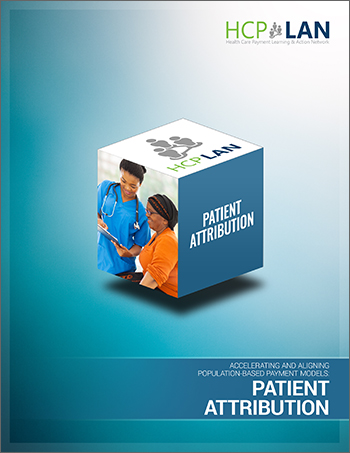

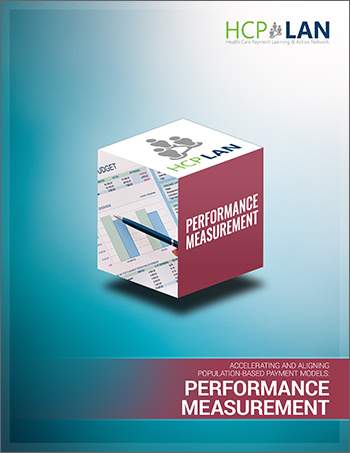
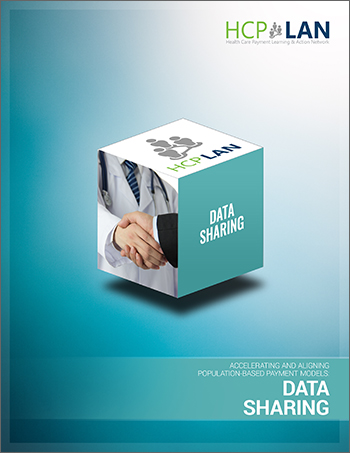

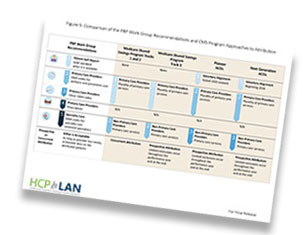

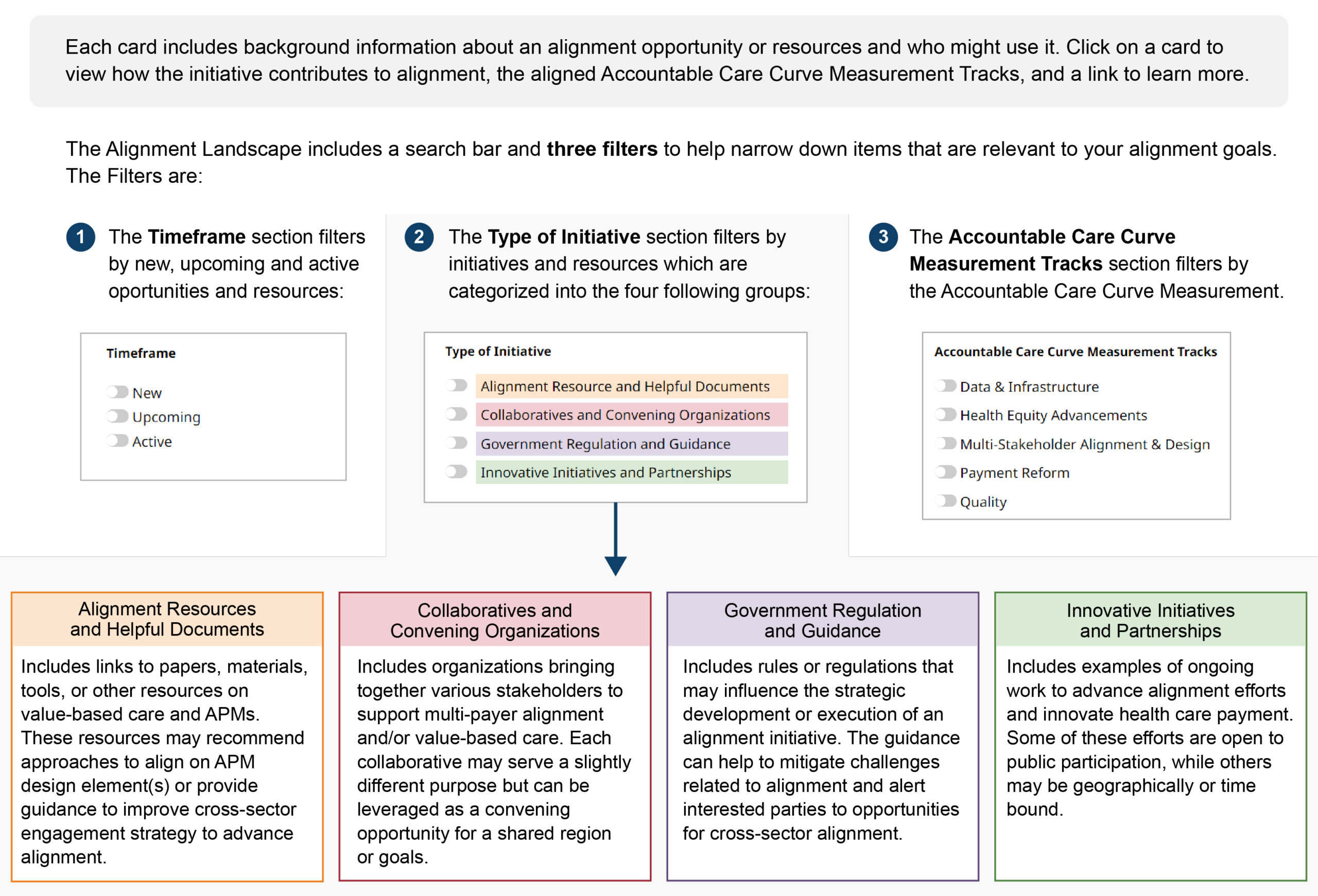



 Emily DuHamel Brower, M.B.A., is senior vice president of clinical integration and physician services for Trinity Health. Emphasizing clinical integration and payment model transformation, Ms. Brower provides strategic direction related to the evolving accountable healthcare environment with strong results. Her team is currently accountable for $10.4B of medical expense for 1.6M lives in Medicare Accountable Care Organizations (ACOs), Medicare Advantage, and Medicaid and Commercial Alternative Payment Models.
Emily DuHamel Brower, M.B.A., is senior vice president of clinical integration and physician services for Trinity Health. Emphasizing clinical integration and payment model transformation, Ms. Brower provides strategic direction related to the evolving accountable healthcare environment with strong results. Her team is currently accountable for $10.4B of medical expense for 1.6M lives in Medicare Accountable Care Organizations (ACOs), Medicare Advantage, and Medicaid and Commercial Alternative Payment Models. Mr. James Sinkoff is the Deputy Executive Officer and Chief Financial Officer for Sun River Health (formerly known as Hudson River HealthCare), and the Chief Executive Officer of Solutions 4 Community Health (S4CH); an MSO serving FQHCs and private physician practices.
Mr. James Sinkoff is the Deputy Executive Officer and Chief Financial Officer for Sun River Health (formerly known as Hudson River HealthCare), and the Chief Executive Officer of Solutions 4 Community Health (S4CH); an MSO serving FQHCs and private physician practices. Victor is the Chief Medical Officer for TennCare, Tennessee’s Medicaid Agency. At TennCare, Victor leads the medical office to ensure quality and effective delivery of medical, pharmacy, and dental services to its members. He also leads TennCare’s opioid epidemic strategy, social determinants of health, and practice transformation initiatives across the agency. Prior to joining TennCare, Victor worked at Evolent Health supporting value-based population health care delivery. In 2013, Victor served as a White House Fellow to the Secretary of Health and Human Services. Victor completed his Internal Medicine Residency at Emory University still practices clinically as an internist in the Veteran’s Affairs Health System.
Victor is the Chief Medical Officer for TennCare, Tennessee’s Medicaid Agency. At TennCare, Victor leads the medical office to ensure quality and effective delivery of medical, pharmacy, and dental services to its members. He also leads TennCare’s opioid epidemic strategy, social determinants of health, and practice transformation initiatives across the agency. Prior to joining TennCare, Victor worked at Evolent Health supporting value-based population health care delivery. In 2013, Victor served as a White House Fellow to the Secretary of Health and Human Services. Victor completed his Internal Medicine Residency at Emory University still practices clinically as an internist in the Veteran’s Affairs Health System. Dr. Brandon G. Wilson, DrPH, MHA (he, him, his) joined Community Catalyst as the Director of the Center for Consumer Engagement in Health Innovation, where he leads the Center in bringing the community’s experience to the forefront of health systems transformation and health reform efforts, in order to deliver better care, better value and better health for every community, particularly vulnerable and historically underserved populations. The Center works directly with community advocates around the country to increase the skills and power they have to establish an effective voice at all levels of the health care system. The Center collaborates with innovative health plans, hospitals and providers to incorporate communities and their lived experience into the design of systems of care. The Center also works with state and federal policymakers to spur change that makes the health system more responsive to communities. And it provides consulting services to health plans, provider groups and other health care organizations to help them create meaningful structures for engagement with their communities.
Dr. Brandon G. Wilson, DrPH, MHA (he, him, his) joined Community Catalyst as the Director of the Center for Consumer Engagement in Health Innovation, where he leads the Center in bringing the community’s experience to the forefront of health systems transformation and health reform efforts, in order to deliver better care, better value and better health for every community, particularly vulnerable and historically underserved populations. The Center works directly with community advocates around the country to increase the skills and power they have to establish an effective voice at all levels of the health care system. The Center collaborates with innovative health plans, hospitals and providers to incorporate communities and their lived experience into the design of systems of care. The Center also works with state and federal policymakers to spur change that makes the health system more responsive to communities. And it provides consulting services to health plans, provider groups and other health care organizations to help them create meaningful structures for engagement with their communities. Tamara Ward is the SVP of Insurance Business Operations at Oscar Health, where she leads the National Network Contracting Strategy and Market Expansion & Readiness. Prior to Oscar she served as VP of Managed Care & Network Operations at TriHealth in Southwest Ohio. With over 15 years of progressive health care experience, she has been instrumental driving collaborative payer provider strategies, improving insurance operations, and building high value networks through her various roles with UHC and other large provider health systems. Her breadth and depth of experience and interest-based approach has allowed her to have success solving some of the most complex issues our industry faces today. Tam is passionate about driving change for marginalized communities, developing Oscar’s Culturally Competent Care Program- reducing healthcare disparities and improving access for the underserved population. Tamara holds a B.A. from the University of Cincinnati’s and M.B.A from Miami University.
Tamara Ward is the SVP of Insurance Business Operations at Oscar Health, where she leads the National Network Contracting Strategy and Market Expansion & Readiness. Prior to Oscar she served as VP of Managed Care & Network Operations at TriHealth in Southwest Ohio. With over 15 years of progressive health care experience, she has been instrumental driving collaborative payer provider strategies, improving insurance operations, and building high value networks through her various roles with UHC and other large provider health systems. Her breadth and depth of experience and interest-based approach has allowed her to have success solving some of the most complex issues our industry faces today. Tam is passionate about driving change for marginalized communities, developing Oscar’s Culturally Competent Care Program- reducing healthcare disparities and improving access for the underserved population. Tamara holds a B.A. from the University of Cincinnati’s and M.B.A from Miami University.


 Dr. Peter Walsh joined the Colorado Department of Health Care Policy and Financing as the Chief Medical Officer on December 1, 2020. Prior to joining HCPF, Dr. Walsh served as a Hospital Field Representative/Surveyor at the Joint Commission, headquartered in Oakbrook Terrace, Illinois.
Dr. Peter Walsh joined the Colorado Department of Health Care Policy and Financing as the Chief Medical Officer on December 1, 2020. Prior to joining HCPF, Dr. Walsh served as a Hospital Field Representative/Surveyor at the Joint Commission, headquartered in Oakbrook Terrace, Illinois.








